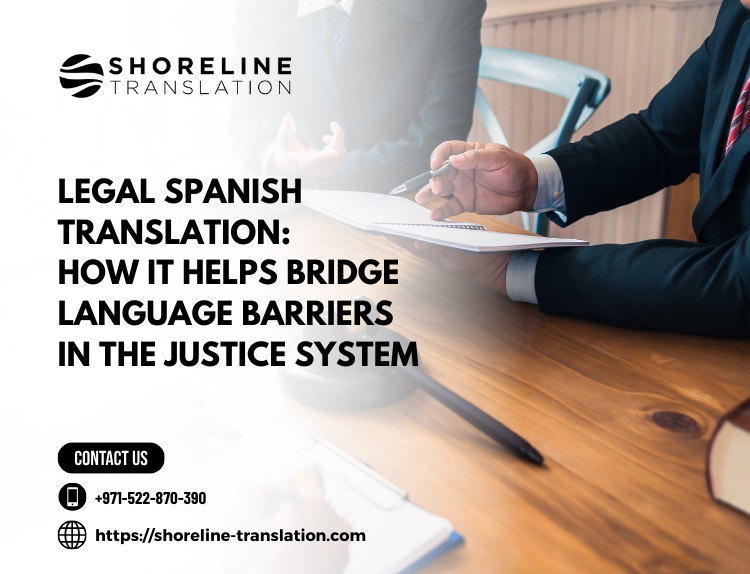Table of Contents
ToggleLost in Translation? Understanding the Challenges and Strategies for Conveying Tone in English-to-French Translations
Are you tired of seeing your carefully crafted English content lose its essence when translated into French? Lost in translation no more! In our latest blog post, we dive deep into the challenges and strategies for conveying tone effectively from English to French. Whether you’re a professional translator or just curious about the art of linguistic adaptations, this article will unveil the secrets behind delivering native-level authenticity in every word. Get ready to unravel the mysteries of cross-cultural communication and revolutionize your translations like never before!
In this article, we examine the unique difficulties of conveying tone through English-to-French translations. The tone is a crucial component of any language, conveying emotion and attitude that is often lost in literal interpretations. We discuss the factors that contribute to tone variations between languages and explore strategies and tools for achieving perfect nuances. Our methods are designed to help you maximize meaning and remain faithful to the source text without sacrificing clarity or natural expression. Additionally, we provide helpful hints on retaining a brand’s voice in global contexts. By taking a close look at these cultural sensitivities, you can ensure your content won’t be ‘lost in translation’ ever again!

What is Translation?
Translation is the process of converting one language into another. It is typically used to communicate concepts or meanings from one language to another and is a vital tool for businesses and individuals who rely on international communication.
Despite its importance, translation can be a complex and challenging task. One of the biggest challenges is conveying the tone of the original text in the translated version. This can be difficult because languages often have different ways of conveying tone, and some tones may not translate well (or at all) into another language.
There are strategies that translators can use to try to convey the original tone of a text, but it is still important to keep in mind that translation is not an exact science. The best way to ensure that your intended message comes across is to work with a professional translator who is familiar with both languages and cultures involved.
Challenges and Difficulties of Translating Tone from English to French
Translating tone from one language to another can be a challenging task. Several different factors can contribute to this difficulty, including the fact that the two languages may have different conventions for conveying tone, or that the translator may not be familiar with all of the nuances of the source language. In addition, there may be cultural differences between the two languages that can make it difficult to accurately convey the intended tone.
One common challenge when translating tone is dealing with idiomatic expressions. These are expressions that cannot be directly translated from one language to another but instead must be conveyed through some other means. This can often be a difficult task, as it can be difficult to find an equivalent expression in the target language that conveys the same meaning and feeling as the original idiom.
Another challenge when translating tone is ensuring that the text sounds natural in the target language. This can often be difficult to achieve, as word choice and sentence structure can vary greatly between languages. It is important to ensure that the translation sounds natural and fluid, rather than stilted or awkward.
finally, it is also important to consider the audience when translating tone. How a text is meant to sound will often differ depending on who it is being addressed to. For example, a text meant for a general audience will likely sound different than one meant for a more specialized audience. It is important to keep this in mind when translating so that the final product has the intended tone and resonates with the intended audience.
Strategies to Enhance Tone and Clarity in Translations
When translating between English and French, it is important to be aware of the potential for differences in tone. The following strategies can help to ensure that the meaning and tone of your original message are conveyed accurately in translation:
1. Be aware of idiomatic expressions.
Idiomatic expressions are often specific to a particular language and can vary widely in meaning and connotation. As such, they can be a major source of difficulty when translating between languages. When possible, try to avoid using idiomatic expressions in your original text, or at least be sure to explain their meaning clearly. If you must use them, make sure to carefully select an equivalent expression in the target language that conveys the same meaning and tone.
2. Use simple, direct language.
Using clear, direct language is always important when communicating in any language. However, it becomes even more important when translating between languages, as there is often more room for misunderstanding. Whenever possible, try to use short, simple sentences and common words to express your ideas. This will help to ensure that your message comes across loud and clear in translation.
3. Be aware of cultural references.
Cultural references can also be a source of difficulty when translating between languages. What may be common knowledge in one culture may be completely unknown in another. When using cultural references in your text, be sure to explain them clearly or choose equivalents that will be familiar to your target audience.
4. Check for accuracy
Always make sure to review your translations carefully before submitting them, checking for accuracy in both meaning and tone. If you’re unsure of a particular expression or phrase, try using an online translation tool to get a feel for how it may be interpreted in the target language. It’s also helpful to enlist the help of a native speaker of the target language to review your translations and offer feedback before they are submitted.
Types of Translation Tools for English-to-French Translations
There are many different types of translation tools available for those translating from English to French. Some of these tools are designed specifically for translations, while others are general-purpose tools that can be used for a variety of tasks.
One type of tool that can be used for English-to-French translations is translation memory. This type of tool stores previously translated sentences or phrases and can be used to help translate new text. Translation memories can help ensure consistency between translations and can also help save time by reusing previously translated text.
Another type of tool that can be used for English-to-French translations is a terminology database. This type of tool stores information on specific terms and their translations. Terminology databases can help ensure accuracy when translating technical or specialized text.
Yet another type of tool that can be used for English-to-French translations is a machine translation system. This type of system translates text using algorithms and generally does not require any human involvement. While machine translation systems have come a long way, they still often produce inaccurate translations and should not be relied on as the sole source of translation.
Human translators are perhaps the most important tool in any translation effort. Human translators bring expert knowledge of both languages and subject matter to the task of translating text. While no single translation tool is perfect, combining multiple tools (including human translators) can help produce the most accurate and faithful translations possible.
Regulating Agencies and Standards for Accuracy
There are many different ways to translate documents between French and English, but not all of them are created equal. Different translation strategies can produce different results, and it’s often hard to know which one is right for the job at hand. This is especially true when it comes to conveying tone.
There are a few main things to consider when choosing a strategy for translating tone: the type of document being translated, the target audience, and the purpose of the translation. Different types of documents will require different approaches. For example, if you’re translating a legal document, you’ll need to be very precise and literal in your translation to ensure that nothing is lost in translation. On the other hand, if you’re translating a piece of creative writing, you’ll need to be more concerned with preserving the author’s voice and style.
Your target audience is also an important consideration. If you’re translating for a general audience, you’ll want to use straightforward language that everyone can understand. But if you’re aiming for a more specific audience, like experts in a particular field, you can afford to use more technical language.
Think about why you’re translating the document in the first place. If your goal is simply to convey information, then accuracy is paramount. But if your goal is to persuade or inspire your reader, then you’ll need to put more thought into how best to translate the original tone.
Tips for Assessing Quality and Readability
When it comes to assessing the quality and readability of a translation, there are a few key things to keep in mind. Here are some tips to help you out:
– Pay attention to the overall tone of the translation. Does it accurately reflect the tone of the original text?
– Check for errors in grammar, spelling, and punctuation.
– Make sure that the meaning of the text is clear and easy to understand.
– Compare the translated text to the original text to see if anything has been lost in translation.
– Analyze sentence structure and word choice to make sure the translation accurately conveys the meaning of the original text.
– Consider if the translated text flows well and is easy to read.
– Make sure that any cultural references or idioms have been properly translated.
By considering these factors, you can ensure that your translations are of high quality and easy to read.
Shoreline Company for English to Professional French Translation Services
Looking for a professional French translation company to help convey the tone of your English content? Shoreline is here to help! We specialize in English to French translations, and our team of experienced translators are experts at understanding and conveying the nuances of tone in both languages.
Whether you’re looking to translate an important business document, a marketing campaign, or even just a personal letter, we can help ensure that the tone of your message comes through loud and clear in French.
Our team is available for both urgent projects and long-term collaborations. We offer competitive pricing, speedy turnaround times, and industry-leading customer service.
For more information about our English-to-French translation services or to get a free quote, please contact us today. We look forward to helping you find the perfect words in French!
FAQ
When translating from English to French, it is important to keep in mind the different ways that the two languages can convey tone. In French, there are many ways to express tone through word choice, grammar, and sentence structure. It is important to choose the right words and phrases to convey the desired tone in your translation.
Here are some common challenges that translators face when conveying tone in their work:
1. Word choice: When translating from English to French, it is important to consider the different meanings of words and how they will be interpreted by a French reader. For example, the word ‘honest’ can be translated as ‘honnête,’ which has a positive connotation, or ‘franchise,’ which has a more neutral connotation. Choosing the right word can be crucial in conveying the desired tone in your translation.
2. Grammar: The grammar of both English and French can affect the way that tone is conveyed in a translation. For example, questions are often used in English to express uncertainty or doubt, while statements are more often used in French to express certainty or confidence. It is important to be aware of these differences and use them to your advantage when translating between the two languages.
3. Sentence structure: The way sentences are constructed can also affect the tone of a translation. In general, shorter sentences tend to be more direct and forceful, while longer sentences are more nuanced and subdued.
To ensure a successful translation, it is important to remember these challenges and use the language’s particular traits to your advantage. Becoming familiar with both English and French and learning how best to convey tone in your translations is essential for a successful outcome.
Conclusion
English-to-French translations require more than just a dictionary and basic grammar. The nuances of tone must be taken into account to convey the intended meaning accurately. Professional translation services should employ strategies such as analyzing original context, deploying synonyms strategically, and relying on feedback from native experts to ensure that the desired connotations are communicated effectively despite language barriers. In this way, effective communication between different cultural contexts can take place despite any complications arising from language differences.
Solutions to tone challenges can be further bolstered through the use of specialized computer programs that apply artificial intelligence (AI) to interpret the context and intent of a document. Such AI-based tools are becoming increasingly popular amongst translation providers as they can help bridge cultural gaps while ensuring accurate communication. Furthermore, if translation providers can properly assess tone with such tools, it will foster greater trust from businesses that need to communicate effectively with foreign customers. Ultimately, by understanding the unique difficulties faced when translating English into French, both practitioners, and theorists in this field will be able to provide further insight into how best to convey tone between languages. In this way, English-to-French translations can become more effective at conveying the desired meaning and better facilitating international cooperation and understanding.
In the end, these strategies reveal that successful English-to-French translations require more than simply a dictionary and knowledge of fundamental grammar. They must also take into consideration the nuances of tone to be effective. With a better understanding of the challenges associated with English-to-French translations, practitioners can use established strategies and technological tools to ensure that the meaning is communicated accurately despite language barriers. Thus, through improved communication techniques translations can foster international cooperation and understanding which ultimately serve to make our world a better place.





